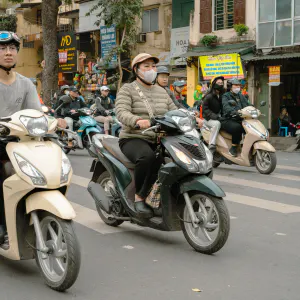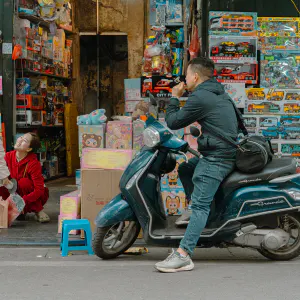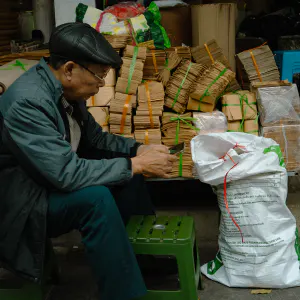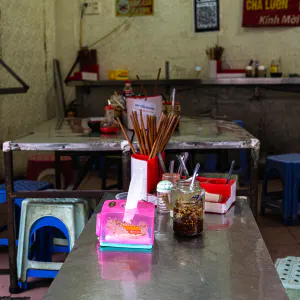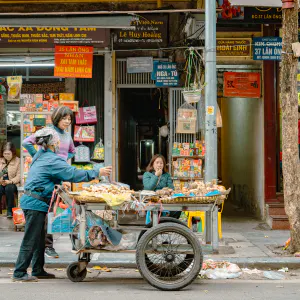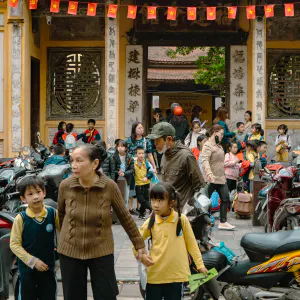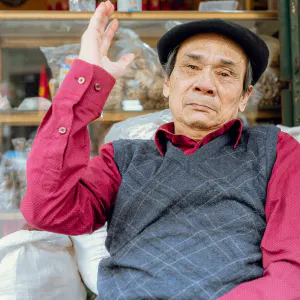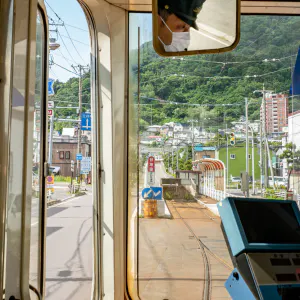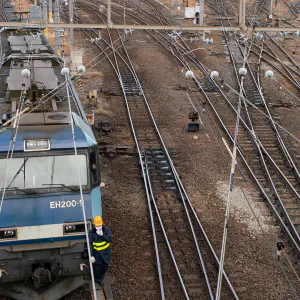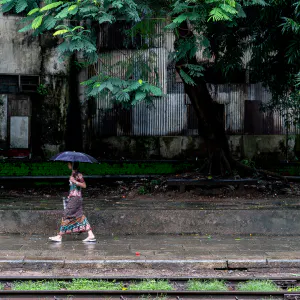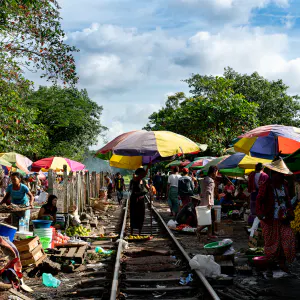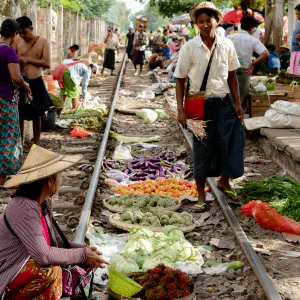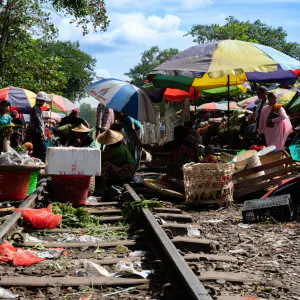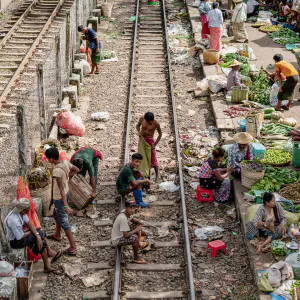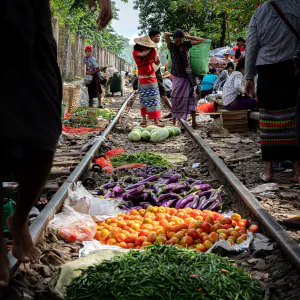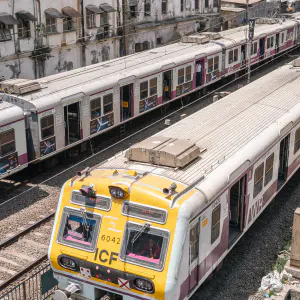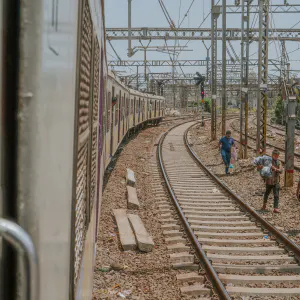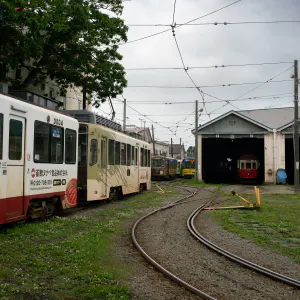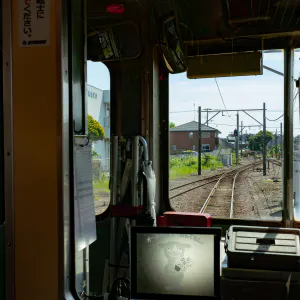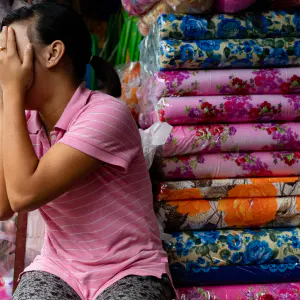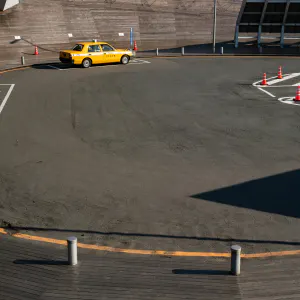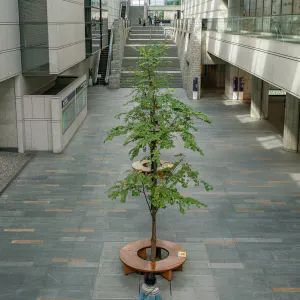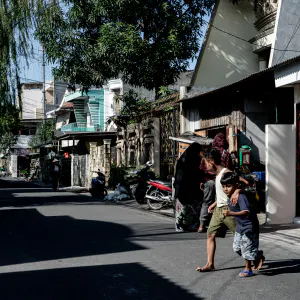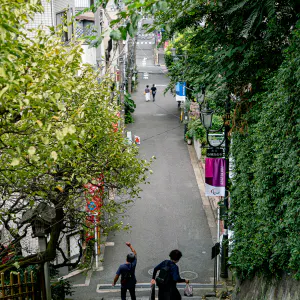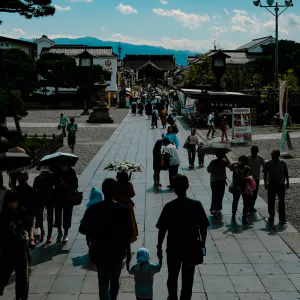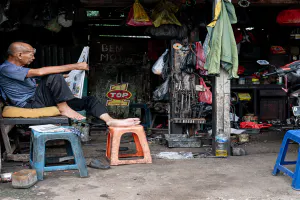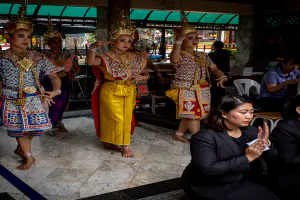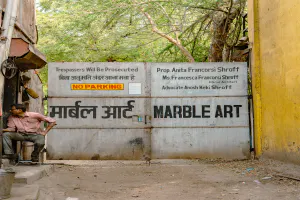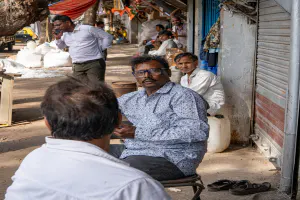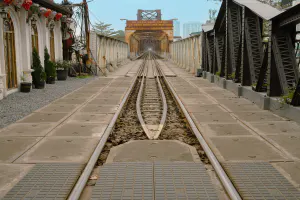The station platform looks like a stage set left behind by the passage of time, and the tracks stretching straight ahead seem to disappear into the Long Bien Bridge
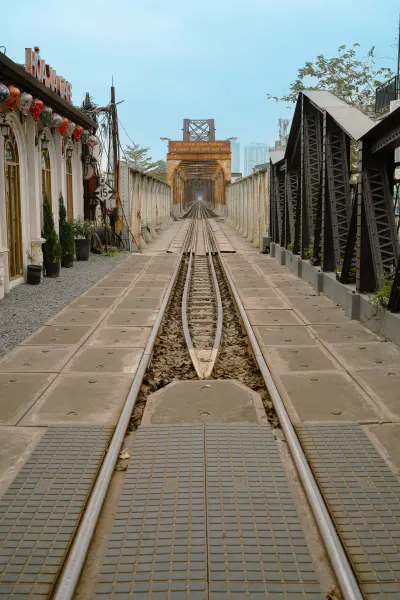
Walking through Hanoi’s Old Quarter, I eventually came upon Long Biên Station. Though called a station, it has hardly any modern facilities—its platform is spare, like the stage set of some forgotten era. Just a step away from the clamor of the city, a peculiar stillness seemed to hover there. Beyond, the tracks stretched straight ahead, as if drawn inexorably into the embrace of the Long Biên Bridge.
That bridge, completed in 1902 during the French colonial era, was a marvel of its time: a steel span that carried both trains and pedestrians, once known as the Pont Doumer. It endured heavy bombardment during both the Second World War and the Vietnam War, only to be repaired time and again. Astonishingly, trains still run across it today. Yet its age is undeniable, and one often hears Hanoi locals remark, half-in jest, that the bridge’s mere survival is itself “a miracle,” given how long overdue its repairs are.
On the flanks of the railway bridge stand cafés, luring visitors with promises of “coffee with a view of Long Biên Bridge.” The idea is charming enough, though each time a train thunders past, the coffee in your cup ripples to remind you that this is no romantic ruin but a living artery of steel. For the Vietnamese, the bridge is more than transport—it is a symbol of both devastation and recovery, of war and reconstruction. To tourists, however, it may be little more than a backdrop for photographs that look good on Instagram.
| Aug 2025 ARCHITECTURE VIETNAM | |
| BRIDGE HANOI RAILROAD STATION |
PHOTO DATA
No
12891
Shooting Date
Mar 2025
Posted On
August 24, 2025
Place
Hanoi, Vietnam
Genre
Architectural Photography
Camera
SONY ALPHA 7R V
Lens
ZEISS BATIS 2/40 CF
